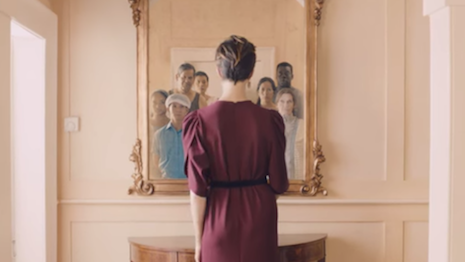 The Commonwealth Fashion Exchange puts a focus on the people behind fashion production. Image credit: Eco-Age
The Commonwealth Fashion Exchange puts a focus on the people behind fashion production. Image credit: Eco-Age
Sustainable fashion consultancy Eco-Age is championing artisan skills through a global initiative that pairs design talents with craftspeople.
The Commonwealth Fashion Exchange will showcase designs that utilize handwork from the organizations’ 52 member countries at an event during London Fashion Week in February. As consumers become more aware of who is making their products, this project aims to promote the possibilities of ethical production.
Eco-Age was reached for comment.
Eco exchange
This is the first time the Commonwealth nations have come together on this type of fashion exhibition. To bring this project to light, Eco-Age is working with Swarovski, The Woolmark Company and Matchesfashion.com.
The Fashion Exchange paired designers from brands including New Zealand’s Karen Walker, Canada's Tanya Taylor and Britain’s Stella McCartney and Burberry with artisans to produce looks. This focuses on the link between designer and producer, aiming to create an exchange of ideas.
Eco-Age saw a need to protect and promote the skilled laborers that make fashion. In doing so, the consultancy aims to reduce poverty, empower women and promote ethical supply chains.
One of the purposes of the Fashion Exchange is to promote the idea of mindful production and consumption.
Fashion is a huge producer of waste, as about 80 billion garments are produced each year. These purchases see short lifespans as consumers constantly seek out the new.
As an alternative, this project promotes the idea of creating lasting fashion through the use of historic techniques. Compared to disposable fashion, the endeavor sees these looks as having more staying power, with potential for these creations to be passed down as heirlooms.
These designs will first be showcased during a reception at Buckingham Palace during London Fashion Week on Feb. 19. From Feb. 21, a public exhibit will be staged at Australia House, and the collection will be staged in other venues in London ahead of April’s Commonwealth Heads of Government Meeting.
The Commonwealth Fashion Exchange
In addition to the physical exhibits, the Fashion Exchange will host a digital showcase on the Google Arts & Culture platform. This will allow visitors to learn about the designers and artisans behind the looks as well as educate themselves about alternative supply chains via data from nonprofit partner Nest, whose work is focused on creating a new handworker economy.
An edited collection from the Fashion Exchange will also retail on Matchesfashion in September.
The Fashion Exchange is hopeful about the possibility of change, particularly with 60 percent of the Commonwealth’s population under the age of 30.
Artisan approach
A number of luxury brands have sought to shed light on the people behind craft.
For instance, Canadian department store chain Holt Renfrew celebrated African culture and artisans by featuring the continent at its annual H Project in-store shop.
The H Project allows Holt Renfrew to work with nonprofit organizations and support socially and environmentally responsible fashion. In 2015 the boutique was called “Uncrate Africa,” and it focused on brands that work with African artisans or donate proceeds to African charities, emphasizing Holt Renfrew’s commitment to charity on a global scale (see story).
Footwear and accessories label Christian Louboutin similarly looked beyond its native France for a charitable collaboration focused on retaining skill and craft.
The brand’s Mexicaba “treasure tote” bags were created in collaboration with Fundación Haciendas del Mundo Maya’s Taller Maya, which gives artisans a place to gather, helping to preserve time-honored techniques that might otherwise be lost without this community. In addition to commissioning work from these artisans, 10 percent of sales of these handbags through Christian Louboutin's channels will go back to the organization, allowing it to continue its work in Mexico’s Yucatan Peninsula (see story).
